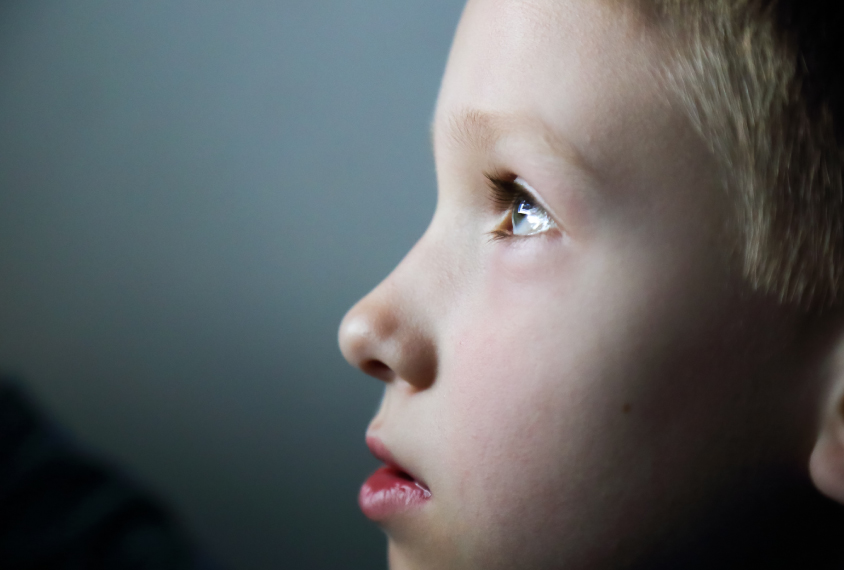
Early-detection technique analyzes how children with autism scan faces
Researchers at the University of Waterloo in Ontario, Canada, have developed a new autism detection technique that distinguishes among different eye-gaze patterns to help doctors more quickly and accurately detect autism in children.
Imagine that your son ‘Tommy’ is about to turn 2. He is a shy and sweet little boy, but his behaviors can be unpredictable. He throws the worst temper tantrums, sometimes crying and screaming inconsolably for an hour. The smallest changes in routines can throw him off.
Is this a bad case of the so-called ‘terrible twos’? Should you give Tommy some time to grow out of this phase? Or are these signs of autism — the neurodevelopmental condition that affects around 2 percent of the population, the equivalent of about one or two children on a full school bus? And how will you find out?
Our research group in the applied mathematics department at the University of Waterloo in Ontario, Canada, has developed a new autism detection technique that distinguishes among different eye-gaze patterns to help doctors more quickly and accurately detect autism in children.
We did this because there are so many benefits of early autism diagnosis and intervention. Studies have found that interventions implemented before age 4 are associated with significant gains in cognition, language and adaptive behavior. Similarly, researchers have linked the implementation of early interventions in autism with improvements in daily living skills and social behavior. Conversely, late diagnosis is associated with increased parental stress and delays early intervention, which is critical to positive outcomes over time.
Autism traits typically appear in the first two years of life and affect the child’s ability to function socially. Although current treatments vary, most interventions focus on managing behavior and improving social and communication skills. Because the capacity for change is greater the younger the child is, one can expect the best outcomes if diagnosis and intervention happen early in life.
Assessment of autism includes a medical and neurological examination, and an in-depth questionnaire about the child’s family history, behavior and development or an evaluation from a psychologist.
Unfortunately, these diagnostic approaches are not really toddler-friendly and can be expensive. One can imagine that it is much easier for children to just look at something, like the animated face of a dog, than to answer questions in a questionnaire or be evaluated by a psychologist.
Math microscope:
You might wonder: What do mathematicians have to do with autism detection?
This is indeed an example of interdisciplinary research our group is involved in. We use mathematics as a microscope to understand biology and medicine. We build computer models to simulate the effects of various drugs, and we apply mathematical techniques to analyze clinical data.
We believe that mathematics can objectively distinguish between the behaviors of children with autism and those of their neurotypical counterparts.
We know that individuals with autism visually explore and scan a person’s face differently from neurotypical individuals. In developing the new technique for detecting eye-gaze patterns, we evaluated 40 children, mostly 4- or 5-year-olds. About half of these children are neurotypical, and the others have autism. Each participant was shown 44 photographs of faces on a screen, integrated into an eye-tracking system.
The infrared device interpreted and identified the locations on the stimuli each child was looking at, via emission and reflection of wave from the iris.
The images were separated into seven key areas — which we named features — in which participants focused their gaze: under the right eye, right eye, under the left eye, left eye, nose, mouth and other parts of the screen. We used four different concepts from network analysis to evaluate the varying degree of importance children placed on these features.
Not only did we want to know how much time the participants spent looking at each feature, we also wanted to know how they moved their eyes and scanned the faces.
For instance, researchers have known that when looking at a person’s face, a neurotypical child focuses more on the eyes, whereas a child with autism focuses more on the mouth. A child with autism also scans faces differently. When moving her focus from someone’s eyes to their chin, for example, a neurotypical child likely moves her eyes more quickly, and via a different path, than would a child with autism.
Removing barriers:
Although it is not yet possible to enter a doctor’s office and request this test, our hope is that this research may eventually make the diagnostic process less stressful for children.
To use this technology would require an infrared eye-tracker, which is commercially available, plus our network-analysis technique. We have explained the algorithms so any software developers who wanted to could, theoretically, implement them.
By removing some of the barriers to early diagnosis, we hope that more children with autism can receive early intervention, resulting in improved quality of life and more independence in the long term.
This story originally appeared on The Conversation. It has been slightly modified to reflect Spectrum’s style.
![]()
Recommended reading

Glutamate receptors, mRNA transcripts and SYNGAP1; and more

Among brain changes studied in autism, spotlight shifts to subcortex
Explore more from The Transmitter

AI-assisted coding: 10 simple rules to maintain scientific rigor

Frameshift: Shari Wiseman reflects on her pivot from science to publishing

